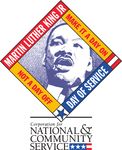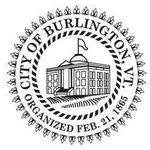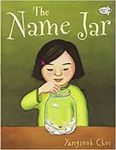DR. MARTIN LUTHER KING JR. DAY - Activity & Discussion Guide
←
→
Page content transcription
If your browser does not render page correctly, please read the page content below
DR. MARTIN LUTHER KING JR. DAY
Activity & Discussion Guide
Dr. Martin Luther King Jr. Cultural
Mosaic Art Activity
Activity Instructions:
1. Cut or tear your tissue paper into smaller pieces.
2. Use the glue stick to glue your tissue paper to a
piece of wax paper. Try creating a mosaic or
stained glass pattern.
3. Glue the second piece of wax paper on top of
the first piece, sandwiching the tissue paper in
between.
4. Glue the Martin Luther King Jr. silhouette on top
of the wax paper. Fun fact: The words below MLK’s
silhouette are titles of his books.
5. Hang your art in a window.
6. Take a pic of your creation, and share the image
with your local and national community by using
these tags:
#1000MLKProject
#ECHOvt
#MartinLutherKing
#MLKDay
1DR. MARTIN LUTHER KING JR. DAY
Activity & Discussion Guide
Introduction:
The United States is a diverse country. We come in all races, colors, and creeds. Collectively, we
speak over 350 languages. Our remarkable diversity is largely due to immigration. Other than
Native Americans, we are all immigrants, the descendents of immigrants, or the descendents of
forced migrants, or enslaved people. As such, we each have inherited our own unique cultural
traditions, beliefs, foods, and languages. Historically, people described America as a “melting
pot.” Today, many people believe America should be more like a “mosaic.” Use the definitions
and discussion guide below to share what you think?
Melting Pot: Implies that immigrants and Black, Indigenous, and People of Color (BIPOC)
should change, or assimilate, to fit a singular American culture, a dominant culture. In this
metaphor, immigrants and BIPOC people give up their cultural identities, such as the food
they eat, the traditions they practice, and their social structures, in order to "melt" into the
dominant idea of American culture.
Mosaic: Implies that immigrants and BIPOC people retain their cultural identity in America. In
this metaphor, multiple cultures coexist within America, creating a diverse, multicultural society.
Discussion Guide:
Younger Students
• Have you ever been made fun of because of a cultural trait, such as your home language or
traditional clothing or food? Describe the experience.
• Have you ever made fun of someone—or witnessed others doing so—because of a cultural
trait? Describe the experience.
• What situations can you think of that force or encourage people to give up parts of their
identity? Explain.
• What are some cultural traditions, foods, or languages that you have experienced traveling
around Burlington? What would it mean for these cultures to have to “melt” into another,
dominant culture?
•Do you think it’s important for people to be able to speak their home language and practice the
cultural traditions passed down through their family? Why?
2DR. MARTIN LUTHER KING JR. DAY
Activity & Discussion Guide
Teens & Adults
•The idea of a mosaic is intended to champion the belief that a nation becomes stronger through
cultural diversity. The melting pot forwards the idea that immigrants should assimilate and that
there should be a singular, dominant American culture. Which metaphor do you think is most
accurate right now?
It is common in schools and other settings for members of a shared racial, gender, sexual
orientation, or cultural group to gather in affinity groups, such as Black Student Unions and
Queer Alliances.
• Why might it be important to members of a given racial, gender, sexual orientation, or ethnic
group to gather around their shared identity separate from other people?
• How do such affinity groups differ from the institutional segregation that Martin Luther King Jr.
fought against?
• What role do affinity groups play in a mosaic society?
Going Further:
Explore the diversity of Black, Indigenous,
and People of Color-owned businesses
around Burlington
https://loveburlington.org/bipoc
Explore this poetic data visualization of
historical immigration to the United States.
https://vimeo.com/276140430
Watch Michael Rain’s TED Talk on
“What it’s like to be a child of immigrants”
https://www.ted.com/talks/mi-
chael_rain_what_it_s_-
like_to_be_the_child_of_immigrants
Visit echovt.org/mlkday to learn about
other MLK Jr. events happening in Vermont.
PHOTOS FROM LOVEBURLINGTON.ORG/BIPOC
3DR. MARTIN LUTHER KING JR. DAY
Activity & Discussion Guide
The Name Jar Book Discussion
The Name Jar explores questions about difference, identity,
and cultural assimilation. When Unhei, a young Korean girl,
moves to America with her family and arrives at a new
school, she begins to wonder if she should also choose a
new name. Her classmates suggest Daisy, Miranda, Lex,
and more, but nothing seems to fit. Does she need an
American name? How will she choose? And what should
she do about her Korean name?
Watch a Read Aloud of The Name Jar Here:
https://www.youtube.com/embed/MSMRS0JW0FA or
by searching “Interactive Read Aloud Kids' Book:
The Name Jar”
On the bus, none of the children are able to pronounce Unhei’s name.
Do you think that the children on the bus could have responded to Unhei’s name in a different
way? What could they have done, and how would that have made a difference?
What should we do when we have difficulty pronouncing other people’s names? Is it important
that we say them correctly? Why or why not?
When her new class asks for her name, Unhei replies, “Um, I haven’t picked one
yet.” When she goes home, she tells her mother, “I think I would like my own
American name.”
How does Unhei explain her wish for an American name to her mother? How does her mother
respond? Do you agree with Unhei’s mother, that being different is a good thing? Why or why not?
What makes a name an American name? Why? What kind of name is your name?
1DR. MARTIN LUTHER KING JR. DAY
Activity & Discussion Guide
Unhei spends a lot of time thinking about a new name, during which time she
visits Mr. Kim’s shop, shows Joey her name stamp, and receives a letter from her
grandma.
What does her grandma’s letter make Unhei think about? How is Unhei’s name connected to her
grandma? Is your name connected to your family? How?
What is the purpose of names? Why do we have them? Does your name help to make you who
you are? Why or why not?
After the weekend, Unhei is ready to introduce herself to the class. “‘I liked
the beautiful names and funny names you thought of for me,’ she told the class.
‘But I realized that I liked my name best, so I chose it again.’”
Why does Unhei choose her own name at the end? What were some of the experiences that
helped her to decide this? Do you think this was the right choice? Why or why not?
Could Unhei still have been Unhei if she had picked a different name? Why or why not?
Original questions and guidelines for philosophical discussion by Sarah Hopson. Edited June
2020 by The Janet Prindle Institute for Ethics.
2You can also read

























































